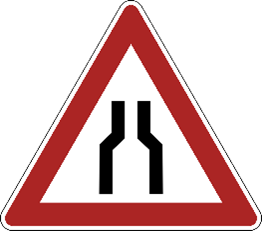Fixing the weakest links.

Your practice should flow smooth, fast, and uninterrupted, like a clear mountain stream.
Most offices, unfortunately, have hidden dams that slow or even block the flows within their office. This limits growth and increases stress.
For example, I have often seen the front desk so clogged with paperwork that new and active patients were inadvertently discouraged from coming in.
Every department and function of your practice is vulnerable to innocuously seeming events that add friction that choke production. Interruptions in the billing department, poor note-keeping systems for doctors, too many therapies to choose from, insufficient space, staff unclear of their goals, staff driven into apathy by being micromanaged… there are many potential opportunities for roadblocks.
Generating more new patients to increase your patient volume is usually a good idea. But often, the increase in volume is short lived because the office had too many hidden log jams and wasn’t set up for the higher patient volume. Even the doctors, while saying they want more new patients, can become fatigued by the end of the day and privately look forward to lighter days.

There are several remedies for these clogged flows.
First, clear up the goals and outcomes of each department. For example, the goal of the front desk is not “completed paperwork.” (A “Fully Scheduled Day” would be better!)
Second, you can review and refine the flow of patients into, through, and out of your practice. Draw a patient flow chart. Start with your new patients. List the sequence of actions your new patient goes through on their first day at your office. Later, you can do this for their second and third day. You can later work out a flow chart for reactivated patients, re-injured patients, and different types of cases.
Then, you and your team can rehearse the entire sequence to see what is missing or what needs to be eliminated.
I cover this in The Goal Driven Business:
Broken flow patterns that remain invisible “clog up” the system and slow down everyone’s best efforts to produce valuable outcomes and excellent service. These are bottlenecks. Discovering and eradicating them is a significant function of the Goal Achievement Process.
In his 1984 book, The Goal, Eliyahu Goldratt introduced what has come to be known as the “Theory of Constraints.” By making a chart outlining the flow of your customers, for example, you’ll better identify “leaks” or constraints which lessen your ability to achieve high quality and quantity customer outcomes.
As Goldratt states, “Since the strength of the chain is determined by the weakest link, then the first step to improve an organization must be to identify the weakest link.”
Every three months or so, do a “walk-through” with your entire team, where someone takes on the role of customer. This rehearsal will bring to light many duplicated or omitted functions. You’d be surprised to discover that many of the tasks you assume are done for your customer are actually skipped or poorly linked in. Sometimes you find tasks from decades ago, that no longer apply, are still being done.
Be an engineer to your goals and discover the constraints holding your office back, and remove them.
Be…… A Goalineer!
Ed
PS For those of you who have purchased my book, The Goal Driven Business, you are welcome to schedule a no-charge consultation to see how you can remove your bottlenecks and achieve your goals. SCHEDULE NOW
If you haven’t purchased the book yet, please do so here. BUY THE BOOK
